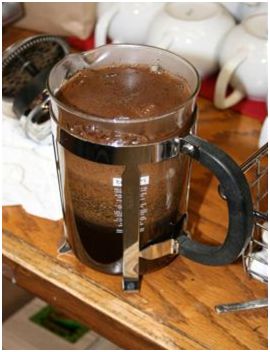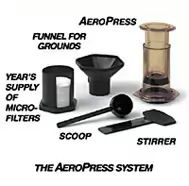Aroma is a huge part of coffee’s allure. My sister-in-law likes coffee. My sister-in-law loves coffee’s aroma.
You know it is true. We’ve all been there. It’s early in the morning, maybe the sun hasn’t even made an appearance. You’re somewhere between la-la land and semi-consciousness and then you smell it. That coffee aroma has wafted into your bedroom and triggered sensors in your body telling you that something good is going on in the kitchen.
Then you catch the smell again, lilting through the door and giving you a gentle nudge. You smile. Some lovely soul has got the coffee on. And smelling that coffee, having it shake you gently awake has made greeting the day a whole lot easier.
The beauty of all of this is that you haven’t had to consider the hundreds of chemical reactions that have had to take place to bring that lovely coffee aroma to your bedside.
The Coffee Research Organization has this to say about the importance of coffee’s aroma and why instant coffee doesn’t measure up to ‘the real thing’ (sorry Coke, coffee’s got you beat by being about 1,000 years ahead of you):
Coffee aroma is responsible for all coffee flavour attributes other than the mouthfeel and sweet, salt, bitter, and sour taste attributes that are perceived by the tongue. Therefore, it might be said that coffee aroma is the most important attribute to specialty coffee. Even instant coffee has the components responsible for stimulation of our taste buds. The difference, however, is that instant coffee lacks most of the aromatic volatile compounds causing a dramatic decrease in the overall coffee flavour.
That’s quite a bold statement – coffee aroma is responsible for all but a few of our favourite brew’s taste and flavour attributes. Maybe that’s why The Lovely & Talented Roast Mistress seems so well fitted to life as a coffee roaster – she’s got the most amazing nose! True, it’s cute as a button, but I’m referring to her over-the-top olfactory capabilities. It has got to be thousands of times now that she’s emphatically asked me, “Can’t you smell that?” and I reply, “Huh, what smell?”
One coffee website says: What makes [coffee] so fascinating is that it contains as many as 1,000 aromatic compounds that stimulate the coffee drinker’s nose. Well, here are a few of those 1,000 aromatic compounds that you, my sister-in-law, TL&TRM, and sometimes myself, are waking up smiling to.
Isobutyl methoxypyrazine, also known as Pyrazine gives coffee its earthy aroma.
Methoxyphenol, also called Guaiacol contributes to coffee’s spicy scent (and thus taste).
Butadione, with the common name Diacetyl, provides coffee its buttery flavour. Pentanedione or simply Pentane also contributes to coffee’s buttery constituency.
Furaneol provides us that wonderful caramel flavour found in so many fine Arabica coffees. And if you want to impress your friends don’t say Furaneol, say Dimethyl-4-hydroxy-3[2H]-furanone.
I could go on, obviously, since there are at least 996 more chemicals to discuss, but you get the idea. That cup of coffee you’re holding in your hand is a chemical goldmine, a wonder of creation.
And knowing about the incredible complexity of what goes on to give coffee its aroma may help you pause and concentrate more on the fragrance of your next cup. Explore it, give in to it, appreciate it, and your coffee drinking experience will be a richer one.
Just don’t get too close to that cup and burn your nose.
(Oh, not to be too technical but you should know that fragrance refers to dry coffee and aroma refers to brewed coffee.)



